The P-39 was an aircraft in the what would’ve been category. It had the looks of a fighter, and the armament to take on any plane, along with a whole new design that could start a whole new era. Unfortunately, it never lived up to its expectations. Still, it went on to become a good low altitude (under 10,000 ft) attacker. It was sent to the Soviets and shunned by the British altogether, because it could do nothing advertised by Bell.
Dimensions:
Length: 30.15ft
Width: 33.99ft
Height: 11.84ft
Performance:
Maximum Speed: 386mph
Maximum Range: 650miles
Rate-of-Climb: 3,333ft/min
Service Ceiling: 35,991ft
Armament Suite: Standard: 1 x 37mm Oldsmobile cannon on the propeller hub or 1 x 20mm Hispano-Suiza cannon.
2 x .50 caliber machine guns in the upper forward fuselage
4 x .30 caliber machine guns in wings
Optional: 1 x 500lb bomb externally mounted on the centerline fuselage.
Structure:
Accommodation: 1
Hardpoints: 1
Empty Weight:5,611lbs
Maximum Take-Off Weight:8,400lbs
Length: 30.15ft
Width: 33.99ft
Height: 11.84ft
Performance:
Maximum Speed: 386mph
Maximum Range: 650miles
Rate-of-Climb: 3,333ft/min
Service Ceiling: 35,991ft
Armament Suite: Standard: 1 x 37mm Oldsmobile cannon on the propeller hub or 1 x 20mm Hispano-Suiza cannon.
2 x .50 caliber machine guns in the upper forward fuselage
4 x .30 caliber machine guns in wings
Optional: 1 x 500lb bomb externally mounted on the centerline fuselage.
Structure:
Accommodation: 1
Hardpoints: 1
Empty Weight:5,611lbs
Maximum Take-Off Weight:8,400lbs
Engine: 1 x Allison V-1710-83 water-cooled engine generating 1,200hp.
The Kingcobra was a modest improvement of the P-39. While the P-39 made an ideal platform, it lacked altitude. The P-63 Kingcobra was made to improve this setback, but never made it to the point of where aircraft were already. It became an under the radar fighter, primarily for the Air Force. Only 3,303 Kingcobras were made.
Dimensions: Length: 32.81ft
Width: 38.39ft
Height: 12.47ft
Performance: Maximum Speed: 410mph
Maximum Range: 450miles
Rate-of-Climb: 2,500ft/min
Service Ceiling: 42,979ft
Armament Suite: 1 x 37mm cannon in propeller hub
4 x .50 caliber machine guns
Bomb racks under wing and fuselage centerline.
Structure: Accommodation: 1
Hardpoints: 3
Empty Weight:6,834lbs
Maximum Take-Off Weight:8,818lbs
Engine: 1 x Allison V-1710-117 liquid-cooled V-12 piston engine generating 1,800hp.
Dimensions: Length: 32.81ft
Width: 38.39ft
Height: 12.47ft
Performance: Maximum Speed: 410mph
Maximum Range: 450miles
Rate-of-Climb: 2,500ft/min
Service Ceiling: 42,979ft
Armament Suite: 1 x 37mm cannon in propeller hub
4 x .50 caliber machine guns
Bomb racks under wing and fuselage centerline.
Structure: Accommodation: 1
Hardpoints: 3
Empty Weight:6,834lbs
Maximum Take-Off Weight:8,818lbs
Engine: 1 x Allison V-1710-117 liquid-cooled V-12 piston engine generating 1,800hp.
Dimensions:
Length: 23.82ft
Width: 27.95ft
Height: 10.40ft
Performance:
Maximum Speed: 227mph
Maximum Range: 360miles
Rate-of-Climb: 2,360ft/min
Service Ceiling: 27,395ft
Armament Suite:
2 x .30 caliber machine guns
Structure:
Accommodation: 1
Empty Weight:2,273lbs
Maximum Take-Off Weight:3,012lbs
Brewster F2A Buffalo
Since the “bi-planes taking off aircraft carriers” era was coming to an end, the Navy asked for a new monoplane design. Brewster’s stubby F2A Buffalo was chosen for this design. It was first sent to squadron VF-3 on the USS Saratoga. It was all metal, except fabric on the control surfaces. With it’s Wright Cyclone engines and 4 .50 cal. mgs, it was a good plane. But it never could live up to the technology expectations of World War 2.
Dimensions:
Length: 26.35ft
Width: 35.01ft
Height: 12.07ft
Performance:
Maximum Speed: 321mph
Maximum Range: 965miles
Rate-of-Climb: 3,070ft/min
Service Ceiling: 33,202ft
Armament Suite:
4 x 12.7mm machine guns
Structure:
Accommodation: 1
Empty Weight:4,731lbs
Maximum Take-Off Weight:7,158lbs
Engine: 1 x Wright R-1820-40 cyclone radial piston engine.
Curtiss P-36 Hawk
The P-36 Hawk made by Curtiss was a widely accepted and used weapon. From it’s first appearance, one could see the influence it had on the design of the P-40 Warhawk, which led to The Flying Tigers fame. Though not overly amazing on any standards, it caught the eye of the USAAC. When the British used it, the Hawk, was the Mohawk, and was also used in Canada and India. China also used the Hawk against the Japanese.
Dimensions: Length: 28.51ft
Width: 37.01ft
Height: 9.25ft
Performance: Maximum Speed: 322mph
Maximum Range: 650miles
Rate-of-Climb: 2,500ft/min
Service Ceiling: 32,349ft
Armament Suite: 4 x .30 caliber machine guns
2 x .50 caliber machine guns
Structure: Accommodation: 1
Hardpoints: 1
Empty Weight:4,676lbs
Maximum Take-Off Weight:5,880lbs
Engine: 1 x Wright R-1820-G205A Cyclone piston radial engine generating 1,200hp.
Dimensions: Length: 28.51ft
Width: 37.01ft
Height: 9.25ft
Performance: Maximum Speed: 322mph
Maximum Range: 650miles
Rate-of-Climb: 2,500ft/min
Service Ceiling: 32,349ft
Armament Suite: 4 x .30 caliber machine guns
2 x .50 caliber machine guns
Structure: Accommodation: 1
Hardpoints: 1
Empty Weight:4,676lbs
Maximum Take-Off Weight:5,880lbs
Engine: 1 x Wright R-1820-G205A Cyclone piston radial engine generating 1,200hp.
Curtiss P-40 Warhawk/Kittyhawk/Tomahawk
The P-40 Warhawk was an upgrade to the older P-36 Hawk (shown above). It first saw action in the AVG (American Volunteer Group) fighting for China against the Japanese, where they got the nickname the Flying Tigers. Mostly forgotten in the ace-makers of the war, The P-40 was a capable and proven fighter in it’s own right, and was able to fight against the Japanese at Pearl Harbor and Midway. The P-40 was a good aircraft for it’s time, but production never did seem to keep pace with the war, letting tech developments and tactics go past it’s strengths.
Dimensions: Length: 33.46ft
Width: 37.47ft
Height: 12.37ft
Performance: Maximum Speed: 378mph
Maximum Range: 240miles
Rate-of-Climb: 2,143ft/min
Service Ceiling: 38,156ft
Armament Suite: Standard: 6 x .50 caliber M2 Browning air-cooled machine guns
Optional: Up to 2,000lbs of external ordnance
Structure: Accommodation: 1
Hardpoints: 3
Empty Weight:6,005lbs (2,724kg)
Maximum Take-Off Weight:8,858lbs (4,018kg)
Engine: 1 x Allison V-1710-81 in-line piston engine generating 1,360hp.
Dimensions: Length: 33.46ft
Width: 37.47ft
Height: 12.37ft
Performance: Maximum Speed: 378mph
Maximum Range: 240miles
Rate-of-Climb: 2,143ft/min
Service Ceiling: 38,156ft
Armament Suite: Standard: 6 x .50 caliber M2 Browning air-cooled machine guns
Optional: Up to 2,000lbs of external ordnance
Structure: Accommodation: 1
Hardpoints: 3
Empty Weight:6,005lbs (2,724kg)
Maximum Take-Off Weight:8,858lbs (4,018kg)
Engine: 1 x Allison V-1710-81 in-line piston engine generating 1,360hp.
Grumman F4F Wildcat
The Wildcat was first used by the British, but was a hero for the Allies in the Pacific. It was originally built by General Motors as an all biplane design, the reason for a stubby fuselage. It was normally overshadowed by the F6Fs and F4Us, and it was not able to match the enemy Zero in speed nor agility. But it had thick armor, and heavy hitting guns, making it uneasy to be shot down. In 1936 it was high performing, but not in 1944. But it was good enough that the British used it until the end of the war.
Dimensions:
Length: 28.87ft
Width: 37.99ft
Height: 11.48ft
Performance:
Maximum Speed: 332mph
Maximum Range: 900miles
Rate-of-Climb: 2,000ft/min
Service Ceiling: 34,698ft
Armament Suite:
Standard (F4F-3):
4 x .50 caliber M2 Browning machine guns OR 4 x 29.5 caliber Darne machine guns
Standard (F4F-4):
6 x .50 caliber M2 Browning machine
Optional (F4F-3):
2 x 100lb bombs OR 2 x 58 gallon droptanks
Optional (F4F-4):
2 x 250lb bombs OR 2 x 58 gallon droptanks
Structure:
Accommodation: 1
Hardpoints: 2
Empty Weight:4,907lbs
Maximum Take-Off Weight:7,423lbs
Engine: 1 x Wright Cyclone R-1820-56 9-cylinder air-cooled radial piston engine devlivering 1,350 horsepower.
Grumman F6F Hellcat
Successful follow-up and logical evolution to the Wildcat. It had it Pratt & Whitney engine, heavy caliber machine-guns, and is able to hold bombs and air to surface missiles. It was built to counter the Zero, and worked perfectly, and earned the nickname the ace-maker. It served the USN, United States Marine Corps, Britain’s Fleet Air Arm, and the Royal Navy. But as it served in Europe, it ruled the skies of the Pacific in 1943 and 1944.
Dimensions:
Length: 33.79ft
Width: 42.65ft
Height: 12.99ft
Performance:
Maximum Speed: 380mph
Maximum Range: 944miles
Rate-of-Climb: 3,410ft/min
Service Ceiling: 37,300ft
Armament Suite:
Standard (F6F-3, F6F-5):
6 x 0.50 caliber M2 Browning heavy machine guns
Alternative (F6F-5N):
2 x 20mm cannons WITH 4 x .50 caliber machine guns.
Optional:
2 x 11.75 (298mm) "Tiny Tim" unguided rockets
6 x 5-inch (127mm) HVAR unguided rockets
8 x 250lb drop bombs (F6F-5)
4 x 500lb drop bombs (F6F-5)
2 x 1,000lb drop bombs (F6F-5)
1 x 2,000lb drop bomb
1 x Mk 13-3 series torpedo
Up to 4,150lbs of externally-held drop ordnance.
Structure:
Accommodation: 1
Hardpoints: 4
Empty Weight:9,059lbs
Maximum Take-Off Weight:12,597lbs
Engine: 1 x Pratt & Whitney R-2800-10W Double Wasp air-cooled radial engine generating 2,000hp.
Grumman F8F Bearcat
The F8F was the fastest prop-driven plane Grumman made. It was not used enough in all the theatres since it arrived too late in the war. It was based on the design of the earlier F6F Hellcat. It’s powerful Pratt & Whitney 2,100 hp R-2800-34W Double Wasp 18 cylinder radial engine made it faster and giving it a better rate of climb. It was also lighter than F6F, and it was smaller, making it easier to control.
Dimensions:
Length: 28.25ft
Width: 35.83ft
Height: 13.78ft
Performance:
Maximum Speed: 421mph
Maximum Range: 1,105miles
Rate-of-Climb: 4,570ft/min
Service Ceiling: 38,698ft
Armament Suite:
Initial:
4 x .50 caliber machine guns
Standard:
4 x 20mm cannons
Optional:
4 x 12.7cm rockets OR 1 x 1000lb bomb
Structure:
Accommodation: 1
Hardpoints: 2
Empty Weight:7,068lbs
Maximum Take-Off Weight:12,948lbs
Engine: 1 x Pratt & Whitney 2,100hp R-2800-34W Double-Wasp 18-cylinder radial piston engine.
Lockheed P-38 Lightning
The P-38 Lightning was rugged fast and was a good combat aircraft. It also flew as a fighter bomber, night fighter recon plane, and as a torpedo bomber. With 2 engines, it went 414 m.p.h, faster than any aircraft before it. Its low drag aerodynamic shape and heaviness also helped it go faster. It had 1 20 mm cannon and 4 .50 caliber machine guns in its nose. A poll showed that trainees like the P-38 the best. It served in the Pacific and in Europe. Its unusual tail helped the Germans give it the name “The Fork-Tailed Devil.”
Dimensions:
Length: 37.83ft
Width: 52.00ft
Height: 9.81ft
Performance:
Maximum Speed: 414mph
Maximum Range: 2,237miles
Rate-of-Climb: 2,500ft/min
Service Ceiling: 43,963ft
Armament Suite:
1 x 20mm Cannon
4 x 12.7mm machine guns
10 x 5in high-explosive rockets (optional)
2 x Drop Tanks (optional)
2 x 500lb bombs (optional)
Up to 4,000lbs of underwing ordnance.
Structure:
Accommodation: 1
Hardpoints: 2
Empty Weight:12,800lbs
Maximum Take-Off Weight:21,601lbs
Engine(s): 2 x Allison V-1710-111 water-cooled inline piston engines generating 1,425hp.
North American P-51 Mustang
The North American P-51 Mustang was more legendary than Spitfire and the Bf 109. It definitely was a good addition to Allied forces in the second half of the war. Designed and flown in 117 days, it could go faster and higher than any other plane, and was clearly the war winning design for the Allies. It was mainly used for escorting and clearing the skies of Luftwaffe planes, but could also strafe airfields and other ground positions. It is a classic warbird, and one of the best fighters of the war.
Dimensions:
Length: 32.32ft
Width: 37.04ft
Height: 13.65ft
Performance:
Maximum Speed: 437mph
Maximum Range: 2,080miles
Rate-of-Climb: 3,475ft/min
Service Ceiling: 41,900ft
Armament Suite:
Dependent upon model:
4 x 20mm long-barrel Hispano-Suiza cannons in wings,
2 x 12.7mm machine guns in nose
4 x 12.7mm machine guns in wings
P-51D:
6 x .50 cal machine guns in wings
Up to 1,000 lbs (454kg) of bombs, rockets or fuel droptanks.
Structure:
Accommodation: 1
Hardpoints: 2
Empty Weight:7,121lbs
Maximum Take-Off Weight:11,601lbs
Engine: 1 x Packard V-1650-7 Merlin piston engine generating 1,590hp.
Republic P-47 Thunderbolt
The P-47 was never as beautiful, long legged, or agile as other planes in World War 2, it was one of the most loved planes. It had “it” where it mattered. And where the weight made it worse at dogfighting, it made it a better ground attack aircraft. It was rugged and reliable, and a monster, as it was the tallest and heavier single-engine single-seat fighter for the Allies. It was better armored and armed than other fighters, and performed superbly at high altitude. “The Jug”, as it was nicknamed was the most produced US fighter (over 15,700 Jugs made.) The German infantry units always dreaded the day when they faced the “Fatty from Farmingdale.”
| Type: | Fighter |
| Powerplant: | One Pratt & Whitney R-2800-77 |
| Max speed: | 467 mph |
| Ceiling: | 43,000 ft |
| Range: | 800 miles |
| Weight (empty): | 11,000 lbs |
| Wingspan: | 42' 7" |
| Length: | 36' 1" |
| Height: | 14' 7" |
| Armament: | Eight.50 cal machine guns |
Vought F4U Corsair
The F4U Corsair was definitely one of the finer fighters of World War Two. It was also the first first to plane to actually counter the Japanese Zero. It was a monster of a machine and was the heaviest shipborne aircraft of 1940. And though it was fast, tough and maneuverable, it had a poor view,which made it hard to land on ships. For that reason, it was mainly used by the land based Marines. Most commonly known for it’s gull wings, it was the most powerful plane in the Pacific, and was the first U.S. plane to reach over 400 mph. And while it was good in World War Two, It also fought in Korea, where it’s 6 .50s were changed into 4 20 mms.
| Powerplant: | One 2000 hp Pratt & Whitney 18-cylinder radial piston engine |
| Max speed: | 417 mph |
| Ceiling: | 41,500 ft |
| Range: | 1,005 miles |
| Weight (empty): | 5,758 lbs |
| Max. T/O: | 7,952 lbs |
| Wingspan: | 38 ft 0 in |
| Length: | 28 ft 9 in |
| Height: | 9 ft 2 1/2 in |
| Armament: | Six .50-cal. machine guns |




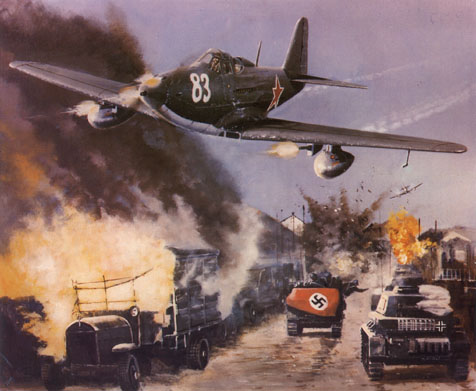

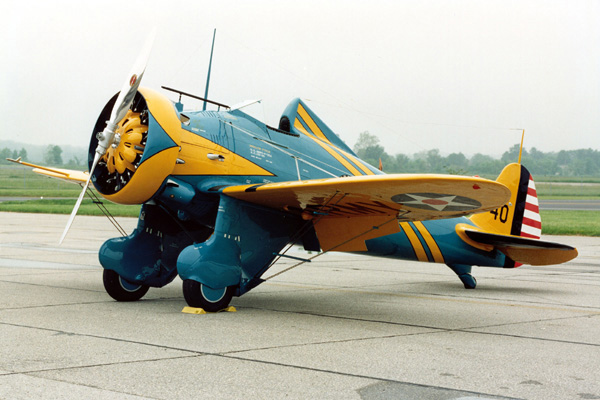






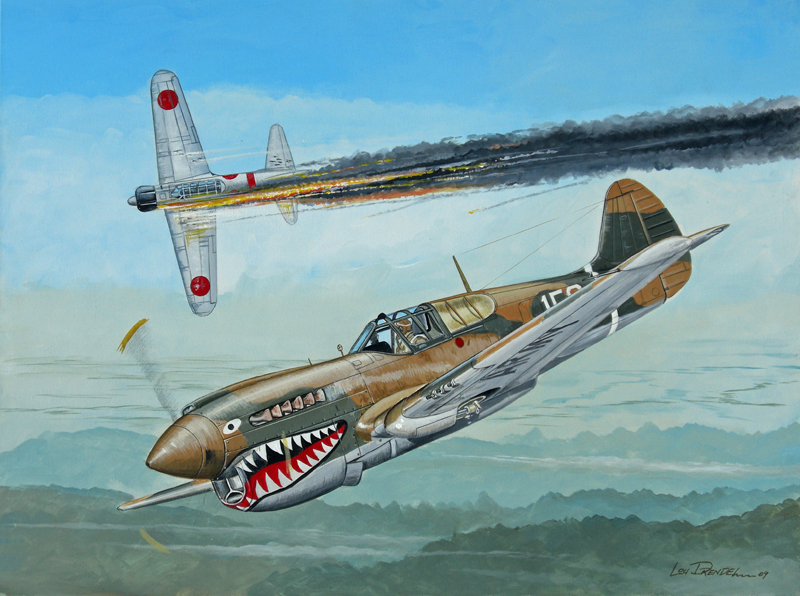


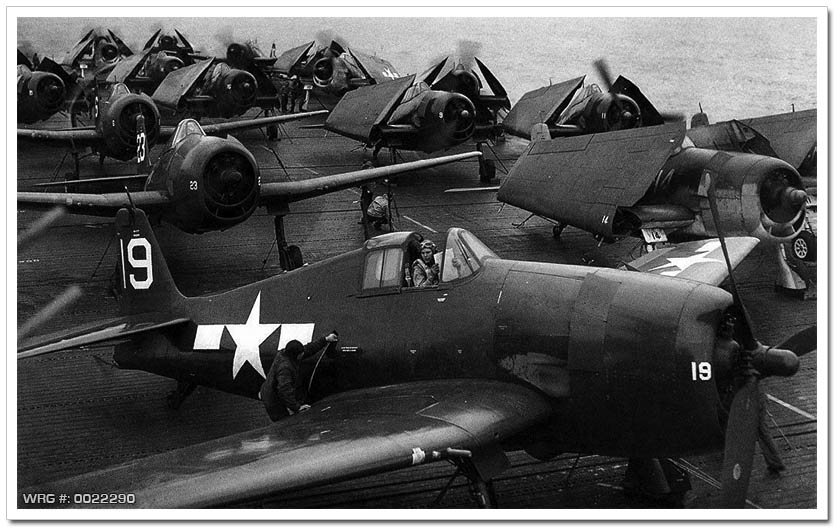
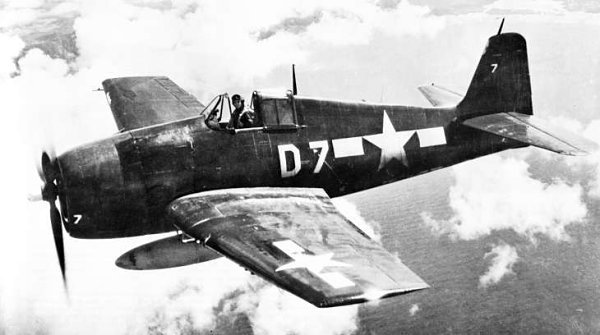

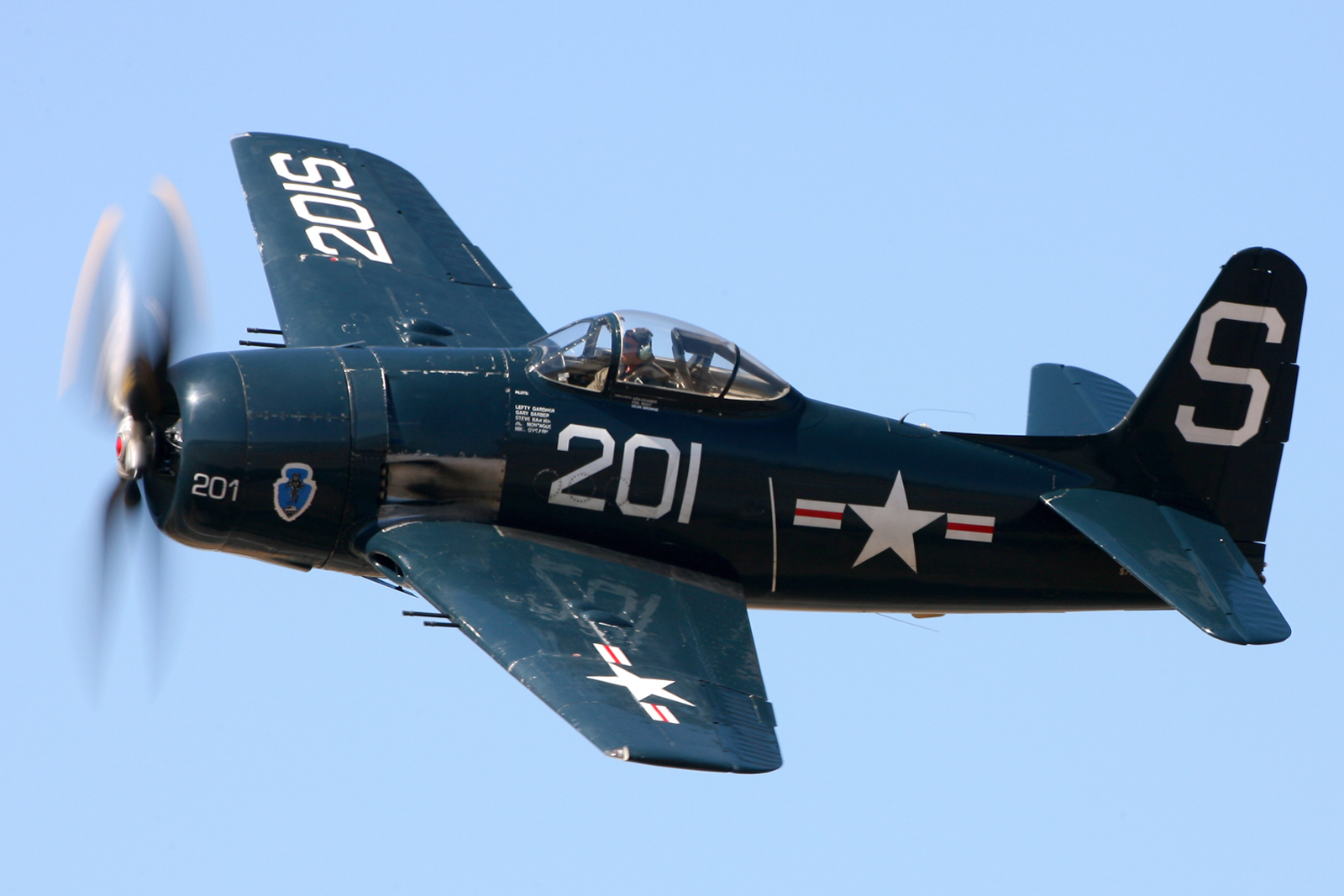

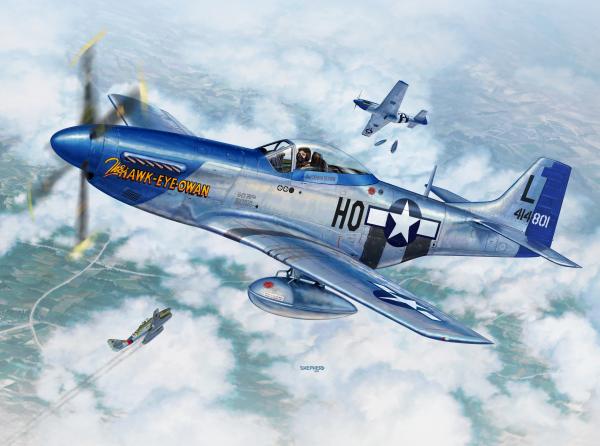

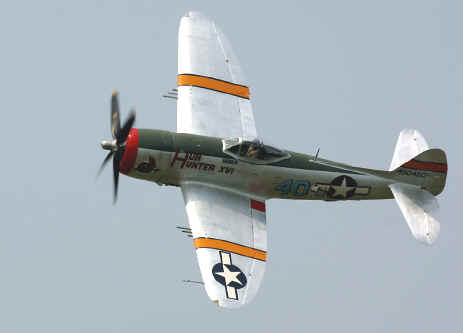

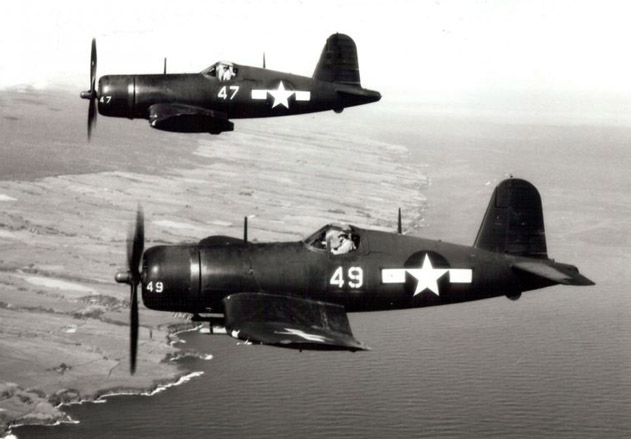

No comments:
Post a Comment